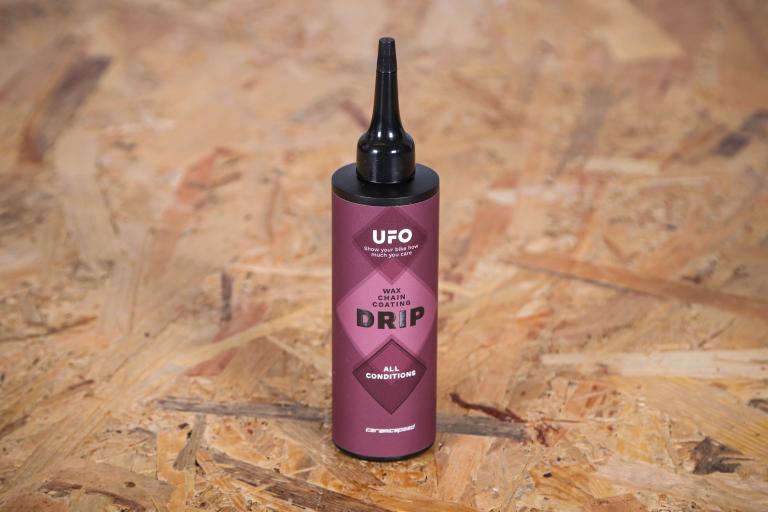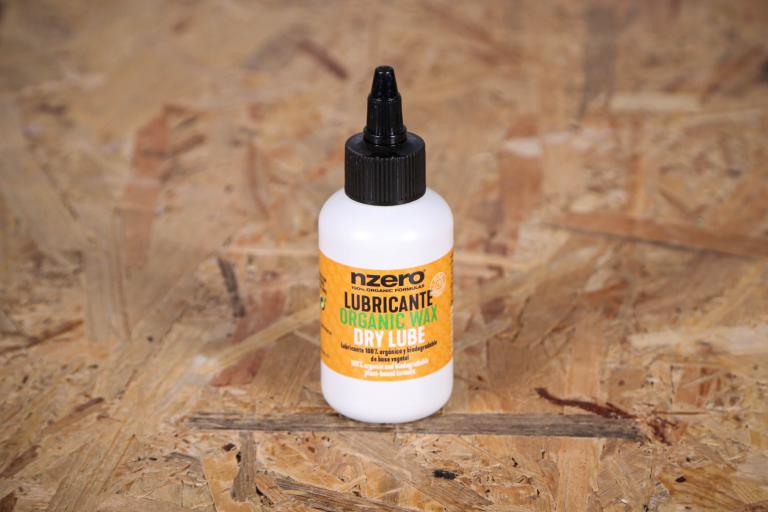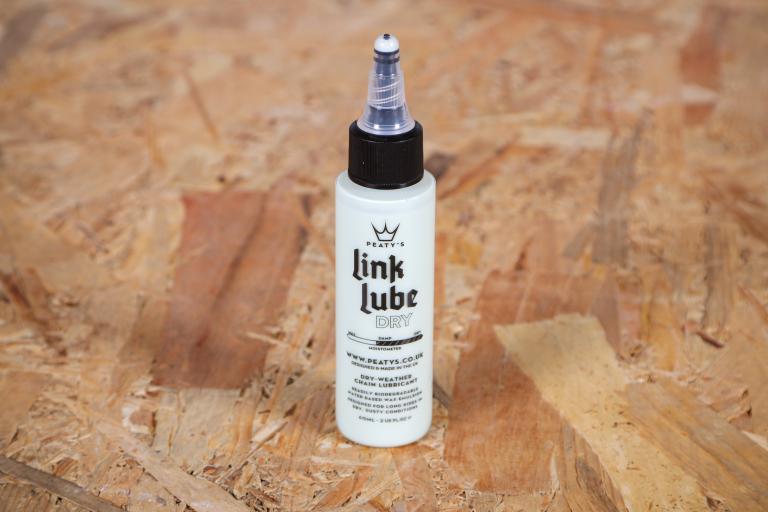- News
- Reviews
- Bikes
- Accessories
- Accessories - misc
- Computer mounts
- Bags
- Bar ends
- Bike bags & cases
- Bottle cages
- Bottles
- Cameras
- Car racks
- Child seats
- Computers
- Glasses
- GPS units
- Helmets
- Lights - front
- Lights - rear
- Lights - sets
- Locks
- Mirrors
- Mudguards
- Racks
- Pumps & CO2 inflators
- Puncture kits
- Reflectives
- Smart watches
- Stands and racks
- Trailers
- Clothing
- Components
- Bar tape & grips
- Bottom brackets
- Brake & gear cables
- Brake & STI levers
- Brake pads & spares
- Brakes
- Cassettes & freewheels
- Chains
- Chainsets & chainrings
- Derailleurs - front
- Derailleurs - rear
- Forks
- Gear levers & shifters
- Groupsets
- Handlebars & extensions
- Headsets
- Hubs
- Inner tubes
- Pedals
- Quick releases & skewers
- Saddles
- Seatposts
- Stems
- Wheels
- Tyres
- Health, fitness and nutrition
- Tools and workshop
- Miscellaneous
- Tubeless valves
- Buyers Guides
- Features
- Forum
- Recommends
- Podcast
review
 BTwin Aerosol Grease
BTwin Aerosol Grease£3.99
VERDICT:
Quick, convenient grease for general workshop duties and older bikes but of limited use on modern machines
Weight:
201g
Contact:
At road.cc every product is thoroughly tested for as long as it takes to get a proper insight into how well it works. Our reviewers are experienced cyclists that we trust to be objective. While we strive to ensure that opinions expressed are backed up by facts, reviews are by their nature an informed opinion, not a definitive verdict. We don't intentionally try to break anything (except locks) but we do try to look for weak points in any design. The overall score is not just an average of the other scores: it reflects both a product's function and value – with value determined by how a product compares with items of similar spec, quality, and price.
What the road.cc scores meanGood scores are more common than bad, because fortunately good products are more common than bad.
- Exceptional
- Excellent
- Very Good
- Good
- Quite good
- Average
- Not so good
- Poor
- Bad
- Appalling
According to the blurb B'Twin spray grease "ensures bearings move smoothly in the headset and hub-only for bearings". Within the same breath they suggest it's suitable for all "turning, sliding or inter-locking parts" which is slightly contradictory and sums up my overall experience.
It's essentially a very old fashioned lithium paste with solvent carrier. The latter traffics it, cleans the host and then evaporates, leaving the grease behind. Lithium is mixed with lye soaps which bulk it up and ensure good adhesion to metal on metal surfaces. This explains their continued popularity in marine and automotive contexts.
Buy B'Twin Aerosol Grease
Find a B'Twin dealer
Generally speaking, it's best to degrease and dry bearings/surfaces first, if only to check their condition but I've got away with a giving some thirsty head and hub sets a liberal dousing.
Surprisingly slick, surfaces lack the same buttery smoothness you get from packing components with paste and most of us would probably trade minimal rolling resistance for staying power. That said, there remains a hard core of riders who want the lowest friction possible, without cooking their bearings and think nothing of stripping and re lubricating their bikes following competitive track meets or time trials.
Taking this approach with a set of pre 1992 cup and cone Campagnolo Athena hubs perked them up considerably, although I'll be repacking them with some heavy duty Teflon infused gooey stuff before summer's out.
Staying power seems much better when used as an assembly paste between metals of similar parentage such as aluminium posts in aluminium frames. Light coatings are sufficient and remained stoical despite a routine of mucky rides sans mudguards and regularly rinsed clean with garden hoses. It's also made installing some relatively tight fixed cups that bit speedier, ditto mudguard, carrier and bottle cage fasteners and cleat bolts.
Then of course, we've more generic workshop jobs '' padlocks, hinges, garage door rollers etc. However, there are better solutions if you want to prevent components from seizing, as it's too easy for lithium grease to fail, leaving parts made from dissimilar metals permanently united. Divorcing fluted seat posts and quill stems from chromoly frames can be a real pain, for example, unless you use a proper anti-seize paste for the job. Lithium grease can also be very unkind to rubberised components and plastics too, which means it's incompatible with carbon composites.
Undeniably convenient and still useful for workshop duties and older bikes, these simple staples are becoming increasingly irrelevant on contemporary bikes.
Verdict
Quick, convenient grease for general workshop duties and older bikes but of limited use on modern machines
road.cc test report
Make and model: B'Twin Aerosol Grease
Size tested: B'Twin Aerosol Grease, 200ml
Tell us what the product is for, and who it's aimed at. What do the manufacturers say about it? How does that compare to your own feelings about it?
"Ensures that the bearings move smoothly in the headset and hub. Only for bearings". "For all rolling, turning, sliding or interlocking parts.".
Slightly contradictory advice. I would suggest it's an old fashioned spray grease that comes in handy for general workshop duties and works quite well (a) if you're running older bikes with contact points of similar parentage or (b) wanted to reduce friction in hub/headset bearings and accepted you might need to strip and reapply more frequently.
Tell us some more about the technical aspects of the product?
Lithium based grease using solvent and butane propellant.
Rate the product for quality of construction:
5/10
Rate the product for performance:
6/10
Rate the product for durability:
5/10
Rate the product for weight, if applicable:
5/10
Rate the product for comfort, if applicable:
6/10
Rate the product for value:
6/10
Tell us how the product performed overall when used for its designed purpose
Overall, these greases still have some value for fasteners and metal on metal contact points but are losing their relevance given the widespread use of incompatible composites on contemporary bikes. While this has reduced friction in headsets and hubs, which might be desirable in a track or time trial context, longevity means pastes represent much better value for money.
Tell us what you particularly liked about the product
Undeniably quick and convenient and has some value in wider workshop contexts.
Tell us what you particularly disliked about the product
Old fashioned ingredients aren't overly kind to rubberised parts and modern components generally.
Did you enjoy using the product? Yes.
Would you consider buying the product? No.
Would you recommend the product to a friend? Possibly.
About the tester
Age: 41 Height: 1m 81 Weight: 70 kilos
I usually ride: Rough Stuff Tourer Based around 4130 Univega mtb Frameset My best bike is: 1955 Holdsworth Road Path and several others including cross & traditional road
I've been riding for: Over 20 years I ride: Most days I would class myself as: Experienced
I regularly do the following types of riding: cyclo cross, commuting, touring, fixed/singlespeed, mtb,
Shaun Audane is a freelance writer/product tester with over twenty-eight years riding experience, the last twelve (120,000 miles) spent putting bikes and kit through their paces for a variety of publications. Previous generations of his family worked at manufacturing's sharp end, thus Shaun can weld, has a sound understanding of frame building practice and a preference for steel or titanium framesets.
Citing Richard Ballantine and an Au pair as his earliest cycling influences, he is presently writing a cycling book with particular focus upon women, families and disabled audiences (Having been a registered care manager and coached children at Herne Hill Velodrome in earlier careers)
Latest Comments
- chrisonabike 2 sec ago
I have a visual memory from childhood of one of this species of bricks popping loose from a bracket on a downhill section and flying away to smash ...
- wtjs 49 min 32 sec ago
There is an increasing 'disconnect' between comments in this topic and reality. Cords are either all cotton or mostly cotton and are going to last...
- ktache 1 hour 20 min ago
There are people out there who will make you the belt out of your old tyre.
- chrisonabike 1 hour 21 min ago
Furry dice and an air freshener for your helmet.
- AidanR 1 hour 34 min ago
Looking at the pictures in the linked article, the bikes aren't actually inconsiderately parked. The only issue is that they're on private property...
- Simon E 2 hours 9 min ago
Ah yes, those are hopefully not the 'master craftsmen' that has constructed a wide range of shoddy Italian cars and motorbikes over the years with...
- Simon E 2 hours 32 min ago
A SuperSix is definitely not an all-rounder....
- chrisonabike 3 hours 24 min ago
Just get them to walk a treadmill - or better, ride exercise bikes to power path lighting.
- AidanR 4 hours 11 sec ago
So his advisers were trying to move funds around to cover losses, but in a way that needlessly created additional liabilities? It would have been...




Add new comment
1 comments
First time I dismantled and reassembled a pair of rapid fire shifters was a bit of a rite of passage for me. Grease in a carrier which transports the grease to the inner workings in a solvent would have let me clean and re-lubricate without taking them to bits. I think I'll get some of this for future ones.
This surely would be good for chains too wouldn't it?